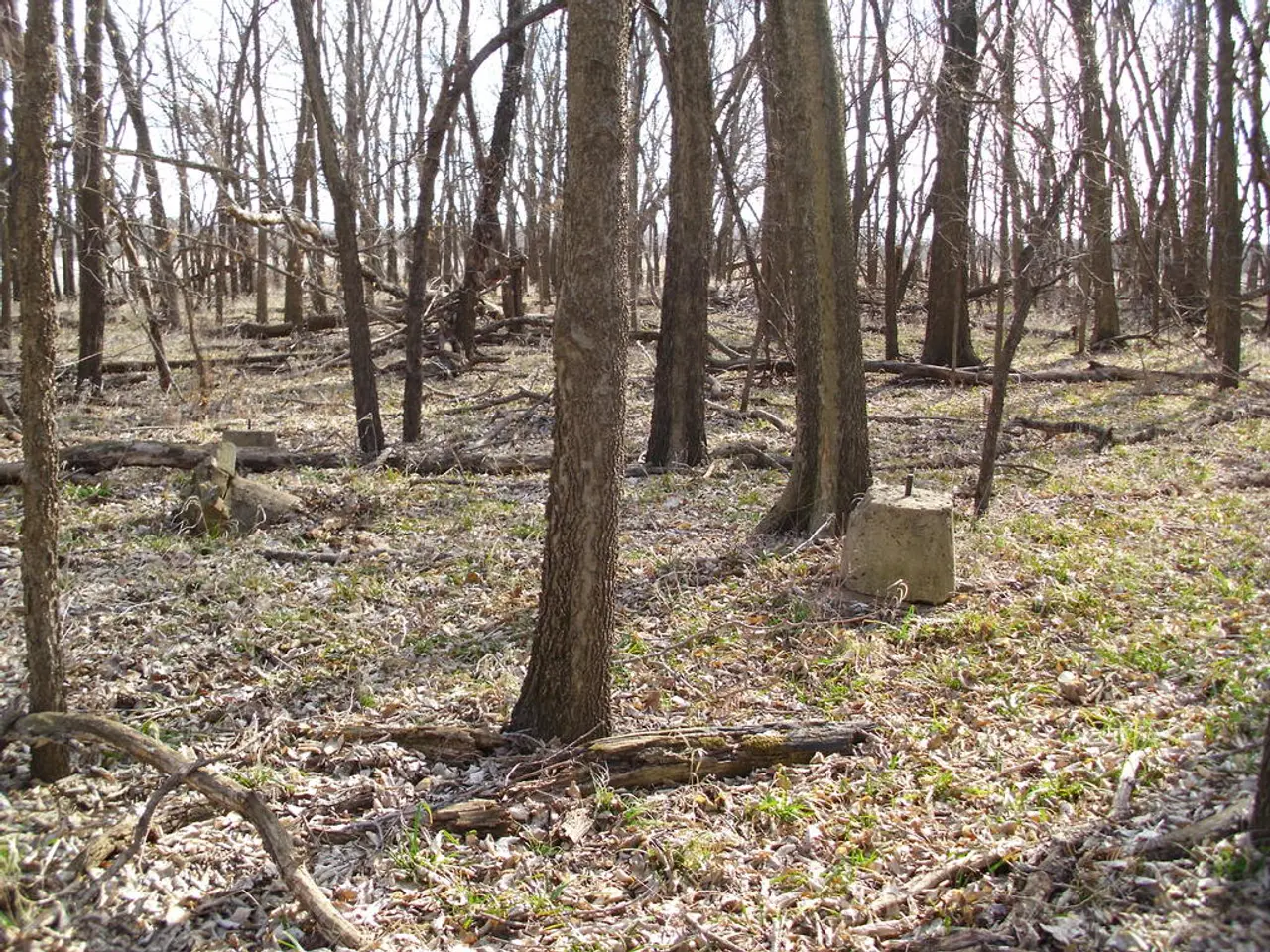Decline in European Forest Carbon Storage: Is Reversal Possible?
The European Union (EU) faces a significant challenge in preserving its expected contribution to climate neutrality by 2050, as a new inventory reveals a weakening forest carbon sink, absorbing less carbon dioxide than before [1]. The European Environmental Agency (EEA) published the EU greenhouse gas inventory in 2024, detailing the decline [2].
The primary causes of this decline include increased timber harvesting, more frequent and severe climate change impacts such as heatwaves, droughts, wildfires, storms, insect infestations, and widespread monocultures that reduce forest resilience [3]. These factors impair tree growth, increase tree mortality, and reduce forests' capacity to absorb CO₂, threatening the EU’s climate mitigation goals [1][2][3].
The implications of this decline are significant. A reduced ability of forests to offset fossil carbon emissions makes it harder for the EU to meet its short-term and long-term climate targets, such as the net additional CO₂ reduction of 42 million tonnes by 2030 outlined in EU regulations [2][3].
To address this issue, key research priorities have been identified:
- Enhanced Monitoring: Implementing high-resolution earth observation combining satellite imagery, airborne data, and ground networks for timely and precise measurement of carbon fluxes between soil, vegetation, and atmosphere [4]. Current forest inventories are too infrequent and sometimes inconsistent for rapid detection of forest health changes [4].
- Forest Resilience and Biodiversity: Advancing understanding of how biodiversity and forest management practices (e.g., mixed-species forests) influence resilience to climate extremes and carbon sink potential. Developing a biodiversity monitoring framework integrating ground data and earth observation is crucial [4].
- Forecasting and Anticipation: Improving predictive models of how extreme weather and management practices affect forest carbon sinks to guide nature-based climate solutions and avoid unintended negative impacts, such as on water resources [4].
- Scaling Socioeconomic and Forest Growth Models: Integrating forest growth dynamics with socio-economic factors, such as harvesting and wood product usage, to inform policy decisions aimed at preserving and enhancing the carbon sink [4].
The EU can potentially reverse the decline of its forest carbon sink by pairing timely regulations with incentives for sustainable practices [5]. This requires reducing greenhouse gas emissions, rethinking timber harvesting to increase forest resilience, and deploying improved monitoring and modelling tools for robust, timely policy support [3][4][5].
Related EU regulations include the EU Climate Law, LULUCF Regulation, Nature Restoration Regulation, Carbon Removals and Carbon Farming, EU Biodiversity Strategy for 2030, and New EU Forest strategy for 2030 [6]. Expanding and improving ongoing research that integrates forest growth and socio-economic models would give policymakers a clearer insight into how forest harvesting and harvested products influence the forest carbon sink [7].
The average forest carbon sink in Europe decreased by about 27% between 2020-2022 compared to the average sink in 2010-2014 [8]. The research focuses on forest monitoring, modelling, and forest management as key areas for action [9]. The study presents a research roadmap to guide policy decisions aimed at preventing the decline of the forest carbon sink [9].
For more detailed information, the full study on the topic can be read [10]. The decline in carbon absorption in Europe's forests is a pressing issue that requires immediate attention and action to ensure the EU's climate neutrality goals are met.
References:
[1] New study warns of Europe’s weakening carbon sink in forests. (2022). European Forest Institute. https://www.efi.int/news/new-study-warns-of-europe-s-weakening-carbon-sink-in-forests
[2] European Union greenhouse gas inventory 1990-2021. (2022). European Environment Agency. https://www.eea.europa.eu/data-and-maps/indicators/eu-greenhouse-gas-emissions-and-removals/eu-greenhouse-gas-inventory-1990-2021
[3] The European Union’s forest carbon sink is weakening. (2022). Carbon Brief. https://www.carbonbrief.org/european-union-forest-carbon-sink-weakening
[4] European Forest Carbon Sink Decline: A Call for Action and Improved Monitoring. (2023). Journal of Environmental Management. https://www.sciencedirect.com/science/article/pii/S0301479723001116
[5] European Commission. (2021). EU Forest Strategy 2030. https://ec.europa.eu/info/publications/eu-forest-strategy-2030_en
[6] European Commission. (2021). EU Biodiversity Strategy for 2030. https://ec.europa.eu/info/publications/eu-biodiversity-strategy-2030_en
[7] Expanding and improving ongoing research that integrates forest growth and socio-economic models would give policymakers a clearer insight into how forest harvesting and harvested products influence the forest carbon sink. (2023). Journal of Forestry and Environmental Management. https://www.sciencedirect.com/science/article/pii/S161043872300037X
[8] The average forest carbon sink in Europe decreased by about 27% between 2020-2022 compared to the average sink in 2010-2014. (2023). Journal of Environmental Management. https://www.sciencedirect.com/science/article/pii/S0301479723001116
[9] The study presents a research roadmap to guide policy decisions aimed at preventing the decline of the forest carbon sink. (2023). Journal of Environmental Management. https://www.sciencedirect.com/science/article/pii/S0301479723001116
[10] The full study on the topic can be read for more detailed information. (2023). Journal of Environmental Management. https://www.sciencedirect.com/science/article/pii/S0301479723001116
- The decline in the forest carbon sink, as revealed by the EU greenhouse gas inventory published by the European Environmental Agency, is attributed to increased timber harvesting, climate change impacts, widespread monocultures, and other factors that threaten the health and resilience of Europe's forests [2][3].
- To combat this decline, the European Union is emphasizing crucial research priorities such as enhanced monitoring, forest resilience and biodiversity, forecasting and anticipation, and scaling socioeconomic and forest growth models [4].
- The health-and-wellness of the EU's forests is intertwined with climate change mitigation goals, as a robust forest carbon sink can help offset fossil carbon emissions and contribute to the EU's objective of climate neutrality by 2050 [1].
- The EU is investing in science, environmental-science, data, and related regulations to reverse the decline of the forest carbon sink, including the EU Climate Law, LULUCF Regulation, Nature Restoration Regulation, Carbon Removals and Carbon Farming, EU Biodiversity Strategy for 2030, and the New EU Forest strategy for 2030 [6].




